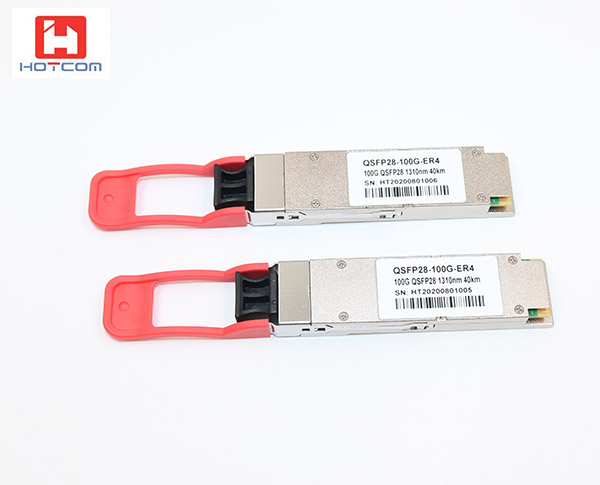With the growth of user demand for data transmission, means that optical communication providers can not only stay in 25G, 40G these data transmission stage, 100G optical module in the data center market has been able to develop rapidly, the application of 100G optical module, optical communication, data center development, the combination of the two makes optical transmission has been greatly enhanced, 100G market trend is able to achieve higher density.
With the evolution of 5G technology, based on the requirements of higher base station density, the high speed rate optical module will generate greater new demand and market space. 25G/100G optical module will be the preferred solution for the future 5G front transmission optical module, when the 5G construction starts, the telecommunications market demand for high-speed optical modules, will be greater than the data center market.
The preferred explanation is that the "G" of 100G refers to the unit of optical signal transmission rate, not the "G" of 5G (Generation 5). 25G laser chip technology is used in 100G optical modules. According to the package form (CFP/XFP/SFP/QSFP, etc.), transmission rate (155Mbps~200Gbps), fiber link (CWDM/DWDM/PSM), mode (single-mode/multimode), plug-in mode (fixed/hot-swappable), etc., there are many types of optical modules. If we consider the operating temperature range, whether the digital self-diagnosis and other functional and performance classification elements, optical module categories are more, QSFP28 is a new generation of 100G optical module packaging, and now has become the mainstream of 100G optical module packaging.
100G optical module technology solutions dating back to 2010, the IEEE 802.3ba project team launched 100G SR10, LR4 and ER4 three standards, respectively, for 100 meters, 10 km and 40 km transmission. 100G optical transmission using digital coherent receiver through phase diversity and polarization state diversity will be all optical properties of optical signals mapped to the electrical domain The 100G optical transmission uses a digital coherent receiver to map all the optical properties of the optical signal to the electrical domain through phase diversity and polarization state diversity, and achieves polarization demultiplexing, channel impairment equalization compensation, timing recovery, carrier phase estimation, symbol estimation and linear decoding in the electrical domain using mature digital signal processing techniques. While realizing 100G optical transmission, 100G optical module has undergone a series of significant technical changes, including polarization multiplexing phase modulation technology, digital coherent reception technology third generation super error correction coding technology, etc., thus meeting the needs of users to keep up with the times.

Advantages of 100G optical module
1, CFP optical modules support the full C-band wavelength adjustable, can complete the link detection, the choice of a common optical dual binary modulation pattern ODB, convenient layout, power consumption is less than 24W.
2, CFP2 optical module volume is one half of CFP, its integration is two times of CFP, can complete according to SOA to complete a wide dynamic input range of stable acceptance sensitivity, support the full CFP optical module, its power consumption is less than 9W.
CFP4 optical module MSA protocol, support and CFP2 and CFP2s the same rate, transmission power significantly increased, but power consumption dropped significantly, only about half of the original, the system cost is also lower than CFP2. Low.
In addition, the CFP4 optical module selects the form of 4*25, through four 25G channels, to complete the 100G transmission, higher transmission power, more stable.
4, QSFP28 optical module package style is smaller than CFP4 optical module. QSFP28 optical module working power consumption is generally not more than 3.5W, the use of QSFP28 optical module can be directly upgraded from 25G to 100G without passing 40G, the cost is lower.
100G optical modules are used in Ethernet; synchronous fiber; optical transmission network, unlimited broadband, etc. H&T Optoelectronics (www.htopto.com) can provide 100G optical module, 40G optical module, 25G optical module, 10G module, etc. H&T Optoelectronics' optical modules are stable and cost-effective, for more information, please visit our website http://www.htopto.com or call 0755-86197637.


